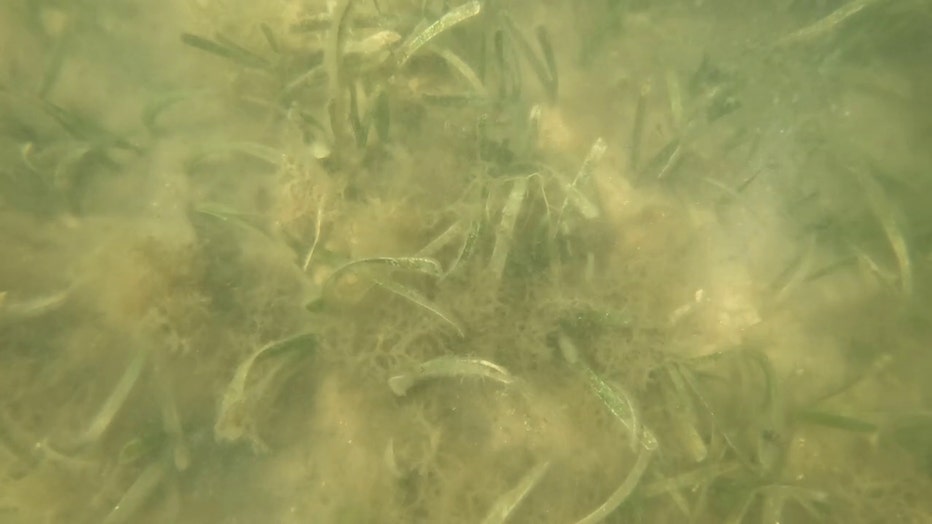Sarasota Bay sees 19% increase in seagrass despite Hurricanes Helene, Milton
BRADENTON BEACH, Fla. - Launching from Bradenton Beach, the Sarasota Bay Estuary Program and Southwest Florida Water Management District went on a science expedition to check on the health of seagrass beds in Sarasota Bay.
"Whenever you’re dealing with a living organism, like seagrass, things change over time," said Dr. Chris Anastasiou, the chief water quality scientist and the lead of the Seagrass Mapping Program with the Southwest Florida Water Management District.
READ: Experts weigh in on study naming 10 Florida beaches America’s most dangerous ones
After just one dive down beneath the surface, they found what they were looking for.
"We were very encouraged, pleasantly surprised that things look good," said Anastasiou.
Big picture view:
The 2024 seagrass mapping study by the Southwest Florida Water Management District showed gains over the last two years, but there was concern Hurricanes Helene and Milton could have brought damage.
On Friday, scientists discovered seagrass intact. While there are patches of macroalgae in parts of Sarasota Bay, which could smother seagrass, each place Dr. David Tomasko and Anastasiou visited showed thriving signs of seagrass beds.

"We’ve gained about 19% increase in seagrass, almost 2,000 acres. That should be able to support more than 70 million fish," said Tomasko, who is the director of the Sarasota Bay Estuary Program.
Dig deeper:
Tomasko said there’s no gimmick when it comes to the health of Sarasota Bay. He said the bay’s health and also seagrass is dependent on improvements to the area’s stormwater and wastewater treatment plants.
"Big upgrades from Manatee County, Sarasota County. The City of Sarasota has got one of the best wastewater treatment plants in the country. We are reducing the nutrient loads from wastewater, stormwater. We are getting our act together and educating the public," said Tomasko.
MORE: Inside an organization's effort to attract more oysters in Bay Area waters
What's next:
While the results for Sarasota Bay are positive, Tomasko said there’s more work to be done.
"Find the nutrient loads that make the most sense, go after them, get the water quality back and the seagrass will come back," he said.
What you can do:
You can also help the Sarasota Bay Estuary program keep eyes on macroalgae and seagrass coverage. The 2024 Eyes on Seagrass program will start in April.
To learn more, visit sarasotabay.org/get-involved/eos.
The Source: The information in this story was gathered through interviews and information from Dr. Chris Anastasiou and Dr. David Tomasko.
WATCH FOX 13 NEWS:
STAY CONNECTED WITH FOX 13 TAMPA:
- Download the FOX Local app for your smart TV
- Download FOX Local mobile app: Apple | Android
- Download the FOX 13 News app for breaking news alerts, latest headlines
- Download the SkyTower Radar app
- Sign up for FOX 13’s daily newsletter

